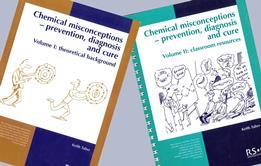Science teachers know a great deal of technical vocabulary, and this has to be introduced sparingly and in a non-threatening way
But even with those words that are familiar to students, the meanings students have are often very different to those intended by the teacher.
The learning doctor
A useful metaphor here might be to see part of the role of a teacher as being that of a learning-doctor. In other words - although it is disappointing when the desired learning has not taken place - the teacher’s role here is to:
- Diagnose the particular cause of the failure-to-learn; and
- Use this information to prescribe appropriate action, designed to bring about the desired learning.
Two aspects of the teacher-as-learning-doctor comparison may be useful. Firstly, just like a medical doctor, the learning-doctor should use diagnostic tests as tools to guide action.
Secondly, just like medical doctors, teachers are ‘professionals’ in the genuine sense of the term. Like medical doctors, learning-doctors are in practice.
Obstacles to learning
There are many types of obstacles that can prevent a student learning as the teacher intends. Some but not all of these are - to a significant extent - within the teacher’s control. Similarly, some of these obstacles are largely outside of the teacher’s control, and of the focus of the present materials.
However, it is useful to consider the various types of factor that can prevent students learning from teachers.
A hierarchy of obstacles
At a fairly basic level of analysis, we can identify the following reasons why a member of a class does not learn the material. These are:
- Absence
- Physical conditions
- Distractions
- Motivation
- Not grasping the teacher’s meaning
Barriers to effective communication
It is helpful to begin our analysis of why science teachers’ skilful expositions often fail to communicate the intended meaning to learners by considering an extreme case.
Imagine you have a new student in your class: a keen, intelligent student who has to date studied a curriculum comparable with the rest of the class, and who joins as you set out on teaching a new topic. Also consider, as sometimes happens, that this young person does not speak the language of instruction in your class, and that you do not speak the students’ native tongue.
It would seem that there is little chance of even the most skilled teacher being able to effectively teach new science concepts to this student. Communication is about sharing understanding, and this is only possible if a common language can be found.
Even such a drastic case is not hopeless if at least one party is prepared to learn the language of the other (and I can recall one such case from my own teaching with a successful outcome due to the student’s efforts with a translating dictionary, and a somewhat bilingual classmate acting as interpreter). The point is, that without a common framework for sharing meaning, a common language, effective communication will not occur.
Clearly, science teachers know a great deal of technical vocabulary, and this has to be introduced sparingly and in a non-threatening way. But even with those words that are familiar to students, the meanings students have are often very different to those intended by the teacher.
What do you mean by a covalent bond?
Consider as an example a term like ‘covalent bond’. Probably most students entering secondary school have no meaning for this term. As they pass through school, and possibly college chemistry and beyond, they construct a meaning, as they meet the term in a range of contexts.
Even ignoring students who get the ‘wrong’ meaning (perhaps mixing up covalent and ionic bonding) there is a whole spectrum of meanings to be developed. Perhaps initially ‘covalent’ bond might be understood as a pair of electrons ‘shared’ between two atoms, and this may originally be restricted to a few isolated examples until the concept is better mastered. It might be strongly associated with a line drawn between two chemical symbols, or a dot-and-cross type Lewis diagram. Perhaps it comes to have further meaning by being contrasted with the ionic bond.
Learning impediments
This way of thinking about communication (or lack of it) during teaching suggests a way to analyse ‘failures’ to communicate. Such failures to communicate can be frustrating for teachers and students, whether they are clear at the time or only become apparent later.
Successful communication occurs when the teacher’s explanations are interpreted by the learner as having meaning sufficiently close to that intended by the teacher.18 Apart from the more obvious barriers to this communication considered at the start of this chapter (the student is absent, not able to hear clearly, not paying attention etc), communication can also break down when the learners’ ‘coding apparatus’ is sufficiently different from the teachers.
The teacher ‘codes’ his or her explanations from a background of chemical knowledge that is often much broader, deeper, more sophisticated and accurate from that of the students. However, the teacher uses her experience of teaching and of students to tailor the explanation to fit their current level of knowledge and understanding.
Notes
For the full version of this chapter, see downloads below.
Downloads
Overcoming learning impediments
PDF, Size 0.68 mb
Websites
Additional information
These PDFs have been taken from the popular book, Chemical Misconceptions : Prevention, diagnosis and care: Theoretical background, Volume 1, by Keith Taber.

Chemical misconceptions

Discover classroom strategies and activities to tackle common misconceptions among students in chemistry, and explore the theory behind different approaches.
- 1
- 2
- 3
- 4
- 5
 Currently
reading
Currently
reading
Overcoming learning impediments
- 7
- 8
- 9
- 10
- 11
- 12
- 13
- 14
- 15
- 16
- 17
- 18
- 19
- 20
- 21
- 22
- 23
- 24
- 25
- 26
- 27
- 28
- 29
- 30
- 31
- 32
- 33
- 34
- 35
- 36





























































































No comments yet